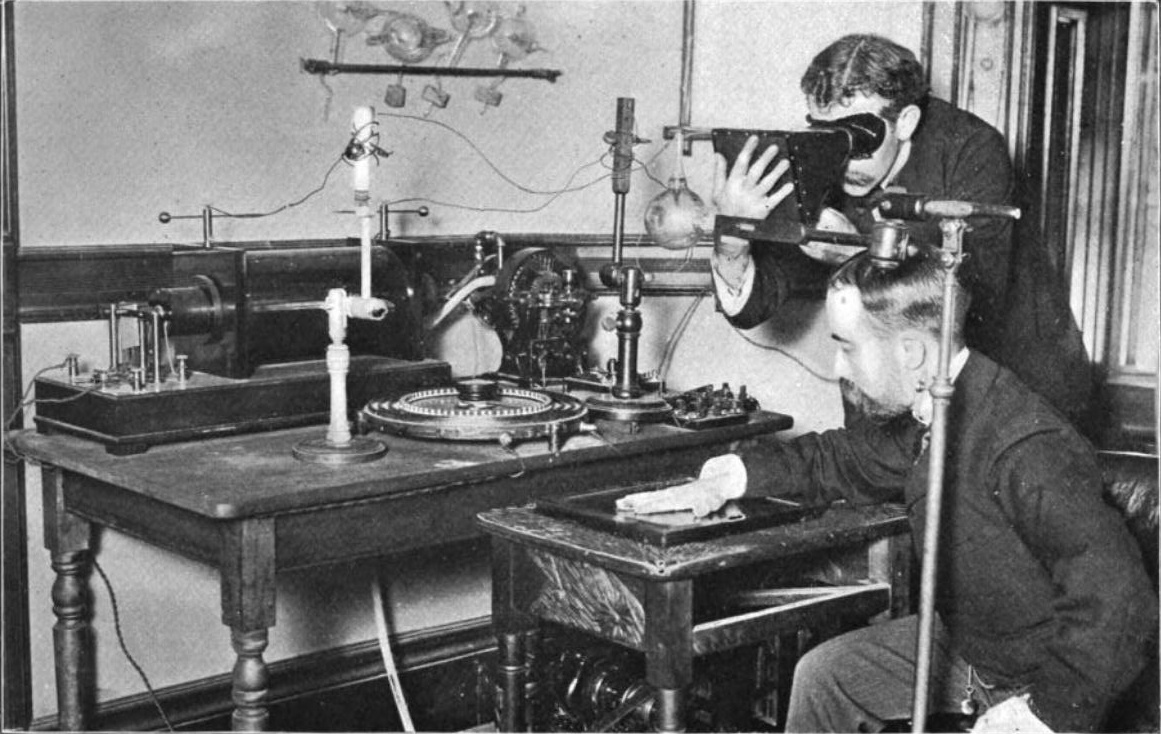Villard Unit on:
[Wikipedia]
[Google]
[Amazon]
Paul Ulrich Villard (28 September 1860 – 13 January 1934) was a French chemist and physicist. He discovered gamma rays in 1900 while studying the radiation emanating from radium.
 Villard spent much time perfecting safer and more accurate methods of radiation dosimetry, which had been done very crudely up until then (typically by evaluating the quality of the image of the experimenter's hand produced on a photographic plate). In 1908, Villard pioneered the use of an ionization chamber for the dosimetry of ionizing radiation. He defined a unit of kerma which was later renamed the roentgen.
Villard spent much time perfecting safer and more accurate methods of radiation dosimetry, which had been done very crudely up until then (typically by evaluating the quality of the image of the experimenter's hand produced on a photographic plate). In 1908, Villard pioneered the use of an ionization chamber for the dosimetry of ionizing radiation. He defined a unit of kerma which was later renamed the roentgen.
The discovery of gamma rays
* (fr
{{DEFAULTSORT:Villard, Paul Ulrich 1860 births 1934 deaths People from Lyon Metropolis 19th-century French chemists 19th-century French physicists Members of the French Academy of Sciences 20th-century French chemists 20th-century French physicists Scientists from Lyon
Early research
Villard was born in Saint-Germain-au-Mont-d'Or, Rhône. He graduated from the École Normale Supérieure in 1881 and taught in several Lycées, ending with a Lycée in Montpellier. He would maintain a laboratory position at the Ecole Normale Supérieure until his retirement. At the time when he discovered what we now call gamma rays, Villard was working in the chemistry department of the École Normale Supérieure rue d'Ulm, Paris. Villard is also credited with the discovery of argon hydrate. He spent the early part of his career (1888–1896) focusing on similar compounds at high pressure.Discovery of gamma rays
Villard investigated the radiation from radium salts that escaped from a narrow aperture in a shielded container onto a photographic plate, through a thin layer of lead that was known to stop alpha rays. He was able to show that the remaining radiation consisted of a second and third type of rays. One of those was deflected by a magnetic field (as were the familiar " canal rays") and could be identified with Rutherford'sbeta rays
A beta particle, also called beta ray or beta radiation (symbol β), is a high-energy, high-speed electron or positron emitted by the radioactive decay of an atomic nucleus during the process of beta decay. There are two forms of beta decay, β� ...
. The last type was a very penetrating kind of radiation which had not been identified before.
Villard was a modest man and he did not suggest a specific name for the type of radiation he had discovered. In 1903, it was Ernest Rutherford who proposed to call Villard's rays '' gamma rays'' because they were far more penetrating than the alpha rays and beta rays
A beta particle, also called beta ray or beta radiation (symbol β), is a high-energy, high-speed electron or positron emitted by the radioactive decay of an atomic nucleus during the process of beta decay. There are two forms of beta decay, β� ...
which he himself had already differentiated and named (in 1899) on the basis of their respective penetrating powers. The name stuck.
Later work
 Villard spent much time perfecting safer and more accurate methods of radiation dosimetry, which had been done very crudely up until then (typically by evaluating the quality of the image of the experimenter's hand produced on a photographic plate). In 1908, Villard pioneered the use of an ionization chamber for the dosimetry of ionizing radiation. He defined a unit of kerma which was later renamed the roentgen.
Villard spent much time perfecting safer and more accurate methods of radiation dosimetry, which had been done very crudely up until then (typically by evaluating the quality of the image of the experimenter's hand produced on a photographic plate). In 1908, Villard pioneered the use of an ionization chamber for the dosimetry of ionizing radiation. He defined a unit of kerma which was later renamed the roentgen.
Retirement and death
When Villard retired, he left Paris. He died inBayonne
Bayonne (; eu, Baiona ; oc, label= Gascon, Baiona ; es, Bayona) is a city in Southwestern France near the Spanish border. It is a commune and one of two subprefectures in the Pyrénées-Atlantiques department, in the Nouvelle-Aquitaine re ...
, France, on January 13th, 1934.
References
External links
*The discovery of gamma rays
* (fr
{{DEFAULTSORT:Villard, Paul Ulrich 1860 births 1934 deaths People from Lyon Metropolis 19th-century French chemists 19th-century French physicists Members of the French Academy of Sciences 20th-century French chemists 20th-century French physicists Scientists from Lyon